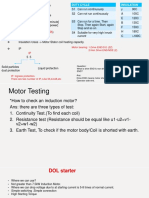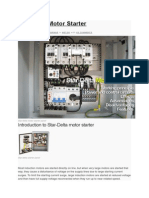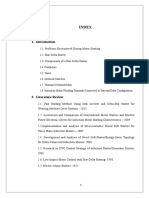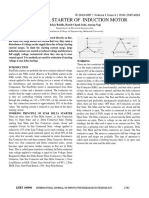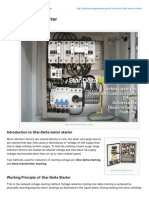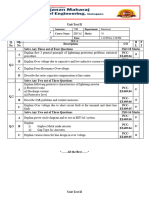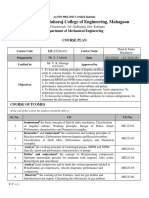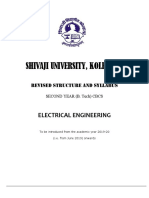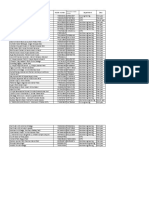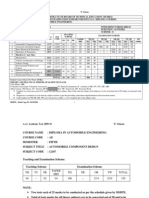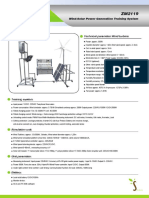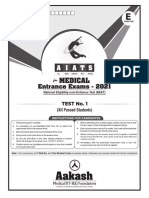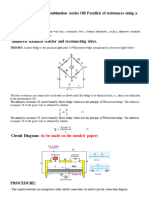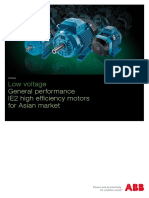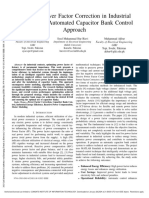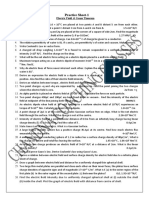0% found this document useful (0 votes)
105 views29 pagesExperiment Final
This document describes experiments conducted on different types of starters for a 3-phase induction motor. It includes:
1) A study of manual and semi-automatic direct online, star-delta, auto transformer, and rotor resistance starters by connecting a 3-phase induction motor and measuring starting current.
2) An apparatus list and specifications for the equipment used, including a 3-phase induction motor, various starters, tools, a line tester and multimeter.
3) Background theory on 3-phase induction motors and the working principles of direct online, star-delta, auto transformer and rotor resistance starters.
4) The procedure to connect the motor and starters, set timers, check voltages and currents
Uploaded by
mallikarjunbpatilCopyright
© © All Rights Reserved
We take content rights seriously. If you suspect this is your content, claim it here.
Available Formats
Download as PDF, TXT or read online on Scribd
0% found this document useful (0 votes)
105 views29 pagesExperiment Final
This document describes experiments conducted on different types of starters for a 3-phase induction motor. It includes:
1) A study of manual and semi-automatic direct online, star-delta, auto transformer, and rotor resistance starters by connecting a 3-phase induction motor and measuring starting current.
2) An apparatus list and specifications for the equipment used, including a 3-phase induction motor, various starters, tools, a line tester and multimeter.
3) Background theory on 3-phase induction motors and the working principles of direct online, star-delta, auto transformer and rotor resistance starters.
4) The procedure to connect the motor and starters, set timers, check voltages and currents
Uploaded by
mallikarjunbpatilCopyright
© © All Rights Reserved
We take content rights seriously. If you suspect this is your content, claim it here.
Available Formats
Download as PDF, TXT or read online on Scribd
/ 29

















